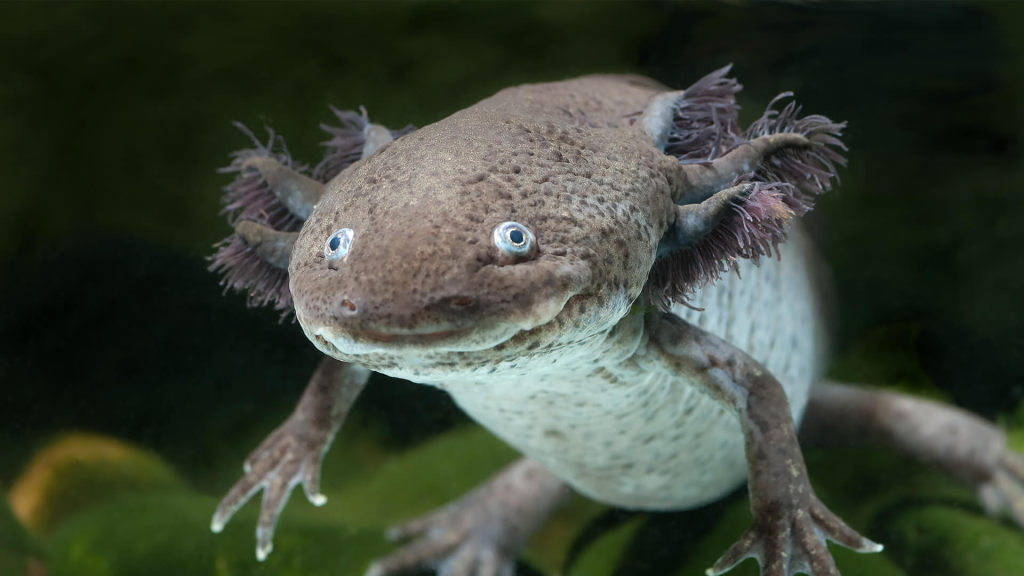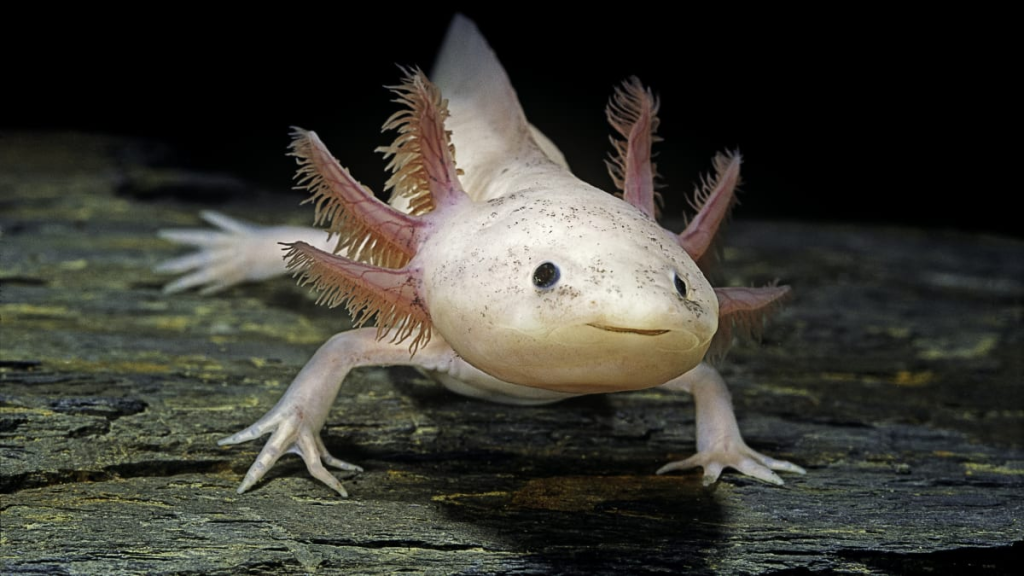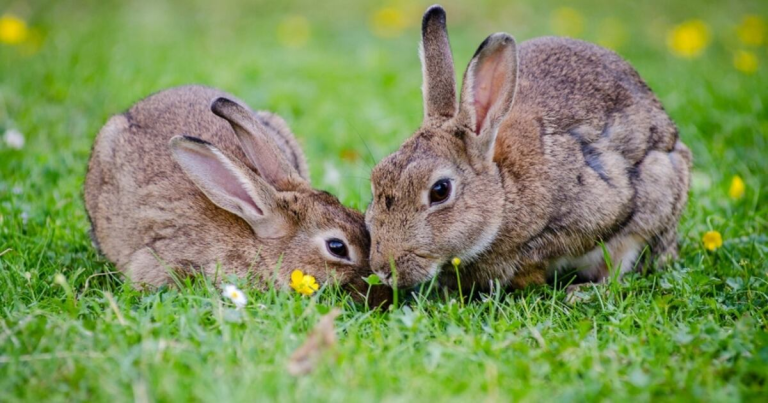Axolotl (Mexican Walking Fish): The Complete Guide to Their Diet, Behavior, and Care
Introduction: Meet the Enigmatic Axolotl
The axolotl, often called the “Mexican walking fish,” is one of the most fascinating amphibians on Earth. Native to lakes around Mexico City, this creature is unlike any other. It retains its larval features throughout its life, a phenomenon known as neoteny, meaning it keeps its gills and aquatic form even as an adult. With its external gills, wide grin, and delicate limbs, the axolotl has captivated scientists, aquarists, and enthusiasts worldwide.
While axolotls are visually striking, their diet and feeding behaviors are equally remarkable. Understanding what axolotls eat and how they feed is essential for anyone interested in their biology, conservation, or keeping them in captivity. This in-depth guide explores their natural diet, feeding habits, hunting strategies, and tips for proper care.
Axolotl Diet in the Wild
In the lakes and canals of Mexico, axolotls are opportunistic predators. They are carnivorous, eating any small animal they can catch, usually at the bottom of their aquatic environment.
1. Worms and Larvae
One of the primary staples of the axolotl diet in the wild is worms, such as tubifex worms and insect larvae. These provide high protein and are soft enough for axolotls to consume without damaging their delicate jaws.
Larval insects, including mosquito and midge larvae, are also frequently eaten. By consuming these larvae, axolotls contribute to controlling local insect populations.
2. Small Fish
Though not always abundant in their native habitats, small fish are consumed when available. Axolotls tend to target slow-moving or weakened fish, as their hunting strategy is more about ambushing than chasing.
3. Crustaceans
Crustaceans, including small shrimp and freshwater amphipods, are part of the axolotl’s natural diet. These creatures provide essential nutrients such as calcium and phosphorus, which are important for skeletal health.
4. Mollusks
Occasionally, axolotls will eat small aquatic snails or mollusks. These provide variety in their diet and help ensure adequate nutrient intake.
5. Carrion
Axolotls are also known to scavenge on dead animals. This scavenging behavior is an adaptive advantage in their natural habitats, allowing them to survive periods when live prey is scarce.
Feeding Behavior and Hunting Strategies
Axolotls have unique hunting behaviors, adapted to their environment and anatomy.
1. Sit-and-Wait Predators
Unlike fish that actively chase their prey, axolotls are ambush predators. They often lie partially buried in sediment at the bottom of lakes or canals, waiting for prey to swim close. This reduces energy expenditure and takes advantage of their ability to quickly strike when food is within reach.
2. Suction Feeding
Axolotls capture food using a technique called suction feeding. They rapidly open their mouths and create a vacuum that pulls prey in, along with some water. This method is highly effective for capturing small, fast-moving prey like insect larvae or shrimp.
3. No Teeth, No Problem
While axolotls have tiny, tooth-like structures called denticles, they cannot chew. Instead, they swallow prey whole, often using a combination of tongue pressure and suction to maneuver food into their stomachs.
4. Sensory Hunting
Axolotls rely heavily on vibration and movement detection in water. Their eyesight is limited, so they sense the movement of prey using their lateral line system and subtle water currents.
Axolotl Diet in Captivity
Feeding axolotls in aquariums requires careful attention to mimic their natural diet and ensure optimal health.
1. Commercial Foods
- Pellets for carnivorous amphibians or fish: Specially formulated axolotl pellets are available, providing balanced nutrition with protein, vitamins, and minerals.
- Frozen or freeze-dried foods: Bloodworms, brine shrimp, and daphnia are excellent options.
2. Live Foods
Live food is particularly beneficial because it stimulates natural hunting behavior. Options include:
- Earthworms
- Bloodworms
- Small freshwater shrimp
Feeding live prey occasionally also improves axolotls’ activity and mental stimulation.
3. Vegetables: A Rare Treat
While axolotls are primarily carnivorous, some individuals may nibble on soft, plant-based items like blanched zucchini or spinach. However, plant matter should never replace animal protein in their diet.
4. Feeding Frequency
- Juveniles: Every day
- Adults: Every 2–3 days
Overfeeding can lead to obesity and water quality issues, while underfeeding can stunt growth and reduce health.
Axolotl Nutrition: Why Diet Matters
A proper diet supports the axolotl’s health, growth, and regenerative abilities. Key nutritional components include:
- Protein: Essential for tissue regeneration and growth
- Calcium and phosphorus: Critical for bone and limb development
- Fatty acids: Provide energy for daily activities
- Vitamins and minerals: Support immune system and overall health
Axolotls are famous for their regenerative capabilities, capable of regrowing limbs, spinal cord segments, and even parts of their brain. Adequate nutrition is vital to support this remarkable biology.
Special Considerations When Feeding Axolotls
1. Avoiding Overfeeding
Excess food can decompose in the tank, degrading water quality. Uneaten food should be removed promptly to prevent bacterial or fungal outbreaks.
2. Choosing Appropriate Size
Prey items must be small enough to swallow whole. Larger food can cause choking or internal injury.
3. Avoiding Live Fish in Some Cases
Feeding live fish can introduce parasites or diseases. When using live prey, ensure it is disease-free and sourced safely.
4. Seasonal Adjustments
Some axolotls may eat less during cooler months. Adjust feeding frequency according to activity level.
Axolotl Diet Across Life Stages
1. Larvae
- Feed on tiny aquatic organisms like daphnia or brine shrimp
- Frequent, small feedings are ideal
2. Juveniles
- Larger prey, such as earthworms, small shrimp, or specialized pellets
- Feed daily to support rapid growth
3. Adults
- Feed 2–3 times per week
- Maintain variety: worms, shrimp, pellets, occasional fish larvae
Understanding life stage requirements ensures axolotls develop properly and remain healthy throughout their lifespan.
Wild vs Captive Diet: Key Differences
- Wild axolotls eat what is available: insects, worms, small fish, crustaceans, and occasionally carrion.
- Captive axolotls rely on human-provided food, requiring carefully balanced nutrition to replicate natural variety.
- In captivity, enrichment is also important: live foods stimulate hunting instincts, reducing boredom and promoting mental health.
Conservation and Diet Challenges
Axolotls are critically endangered in the wild due to habitat loss, pollution, and invasive species. Understanding their diet is crucial for conservation:
- Reintroduction programs must provide natural prey items.
- Knowledge of wild diet helps design breeding programs that maximize health and survival.
- Captive diets should mimic wild food sources to ensure reproductive success and regeneration capabilities.
Interesting Facts About Axolotl Feeding
- Axolotls have been observed cannibalizing smaller or weaker individuals when food is scarce.
- They can survive months without eating in extreme conditions, shrinking their bodies to conserve energy.
- Suction feeding allows them to capture prey silently, an advantage in murky waters.
- Their diet contributes to controlling insect populations in their natural habitat.
Tips for Keeping Your Axolotl Healthy Through Proper Feeding
- Provide a balanced diet with protein-rich foods
- Feed appropriate portions to avoid overfeeding
- Include variety: pellets, worms, shrimp
- Observe natural hunting behavior with live foods
- Ensure water quality is optimal: uneaten food can cause ammonia spikes
- Adjust feeding frequency according to life stage and season
Conclusion: Understanding Axolotl Diet Is Key to Thriving Animals
The axolotl’s diet—both in the wild and captivity—reveals its unique biology and ecological importance. These neotenic amphibians are opportunistic predators, feeding on worms, insect larvae, crustaceans, small fish, and sometimes other axolotls. Their specialized hunting strategy, including suction feeding and reliance on vibration detection, highlights an evolutionary adaptation to aquatic life.
Providing proper nutrition in captivity supports their regenerative abilities, growth, and long-term health, while knowledge of their natural diet informs conservation efforts. For scientists, aquarists, and enthusiasts, understanding what axolotls eat and how they feed is the first step toward appreciating one of the most extraordinary amphibians on the planet.
FAQ: Everything You Need to Know About Axolotl Diet and Feeding Habits
1. What do axolotls eat in the wild?
Axolotls are opportunistic carnivores. In their native lakes and canals around Mexico City, they eat worms, insect larvae, small crustaceans like shrimp and amphipods, tiny fish, and occasionally carrion. Their diet depends on prey availability and the size of the axolotl. By feeding on these organisms, axolotls also help regulate local aquatic populations.
2. Do axolotls eat plants or algae?
Axolotls are primarily carnivorous. While some individuals may nibble on soft plant matter, they cannot obtain enough nutrients from vegetation alone. Algae or plant material in their habitat is usually incidental rather than intentional food.
3. How do axolotls catch their food?
Axolotls are sit-and-wait predators. They often lie partially buried in sediment and use suction feeding to capture prey. When prey comes within reach, they rapidly open their mouth, creating a vacuum that pulls in food along with some water. They swallow prey whole, as their tiny teeth cannot chew.
4. Do axolotls have teeth?
Axolotls have small, tooth-like structures called denticles, but these are not used for chewing. They mainly help grip slippery prey before swallowing. Most of their feeding relies on suction and precise movement.
5. Can axolotls eat live prey in captivity?
Yes, live food such as earthworms, bloodworms, and small shrimp is excellent for stimulating natural hunting behavior. It encourages physical activity and mental enrichment. However, make sure the live prey is disease-free to avoid introducing parasites or pathogens.
6. Can axolotls eat frozen or dried food?
Absolutely. Axolotls can be fed frozen or freeze-dried bloodworms, brine shrimp, or specialized axolotl pellets. These foods provide balanced nutrition and are convenient for aquarium care. Be sure to soak freeze-dried foods in water before feeding to prevent digestive issues.
7. How often should axolotls be fed?
- Juveniles: Once daily
- Adults: Every 2–3 days
Feeding frequency depends on age, size, and activity level. Overfeeding can lead to obesity and water quality issues, while underfeeding may stunt growth and affect health.
8. Do axolotls eat each other?
Cannibalism can occur, particularly if food is scarce or axolotls are housed together in small tanks. Larger individuals may eat smaller ones. Providing adequate food and space minimizes this behavior.
9. Can axolotls survive without food?
Yes, axolotls can survive for extended periods without food due to their low metabolic rate. During fasting, they may shrink slightly to conserve energy. However, prolonged food deprivation can lead to weakened health and reduced regenerative abilities.
10. What is the best diet for axolotls in captivity?
A balanced diet should include a combination of:
- Axolotl-specific pellets
- Earthworms or bloodworms
- Small shrimp or freshwater invertebrates
- Occasional live prey for enrichment
Ensure prey items are appropriately sized and nutritionally complete.
11. Can axolotls eat small fish?
Yes, they can eat small fish, especially slow or weakened ones. However, feeding live fish in captivity is generally discouraged due to the risk of disease and parasites. Frozen or pellet alternatives are safer and nutritionally sufficient.
12. Do axolotls have preferences for certain foods?
Individual axolotls may develop preferences, but most are highly opportunistic. Worms are often the preferred food due to their high protein content and ease of capture. Live prey can stimulate feeding behavior more effectively than inert food alone.
13. Do axolotls hunt at night or during the day?
Axolotls are primarily nocturnal. They hunt mostly at night, relying on movement and vibrations to detect prey. In captivity, they often feed more actively in dim light or darkness, which mimics their natural behavior.
14. How does water temperature affect axolotl feeding?
Axolotls are cold-water amphibians. Optimal feeding occurs at 60–68°F (16–20°C). Higher temperatures can increase metabolism and appetite temporarily but may stress the animal. Lower temperatures reduce feeding activity as metabolism slows.
15. Do axolotls need vitamins or supplements?
If the diet is varied and nutritionally complete, additional vitamins are usually unnecessary. However, calcium supplementation may be needed for proper limb and bone health if diet lacks natural sources like worms or crustaceans.
16. How do axolotls process their food?
Axolotls have a simple gastrointestinal system. Prey enters the mouth, enzymes break down soft tissues, nutrients are absorbed in the stomach and intestine, and waste is expelled through the mouth. They swallow food whole, so prey size must be appropriate to avoid choking.
17. Can axolotls eat too much?
Yes, overfeeding is a common problem in captivity. Excess food can lead to obesity, digestive issues, and poor water quality due to decomposition. Monitoring portions and removing uneaten food is essential.
18. Do axolotls need live prey to stay healthy?
Live prey is beneficial but not essential. It promotes natural hunting behavior and mental stimulation. A diet of high-quality pellets and occasional frozen or prepared food can maintain optimal health if live food is unavailable.
19. Can axolotls eat insects from the garden?
It’s generally discouraged because outdoor insects may carry pesticides or parasites. Safe alternatives are commercially raised insects or worms from trusted sources.
20. Why is understanding axolotl diet important for conservation?
Axolotls are critically endangered in the wild. Knowledge of their natural diet helps conservationists design reintroduction programs, ensuring captive-bred individuals survive. Proper nutrition also supports reproductive success and the health of wild populations.
21. How does diet affect axolotl regeneration?
Axolotls are renowned for their ability to regenerate limbs, spinal cord, and other tissues. Adequate protein and essential nutrients from a balanced diet directly support these regenerative processes, making diet a critical factor in their biology.
22. Can axolotls eat carrion?
Yes, axolotls are opportunistic scavengers. They may consume dead fish or decaying invertebrates in the wild. This behavior provides an adaptive advantage when live prey is scarce.
23. Do axolotls have dietary differences based on age?
Yes. Juveniles require more frequent feeding with smaller prey to support growth. Adults eat less frequently but need nutrient-dense food to maintain health and regenerative abilities.
24. Can axolotls eat frozen fish or shrimp?
Yes, frozen shrimp or small fish is acceptable. Always thaw and rinse frozen food before feeding to remove preservatives and ensure safety.
25. How can I tell if my axolotl is eating properly?
Signs of a healthy diet include:
- Regular growth and weight maintenance
- Active hunting behavior
- Bright external gills and smooth skin
- Clear, healthy digestive activity (minimal bloating or constipation)








